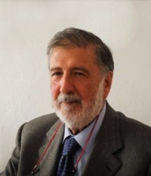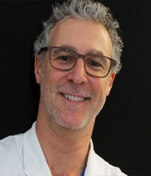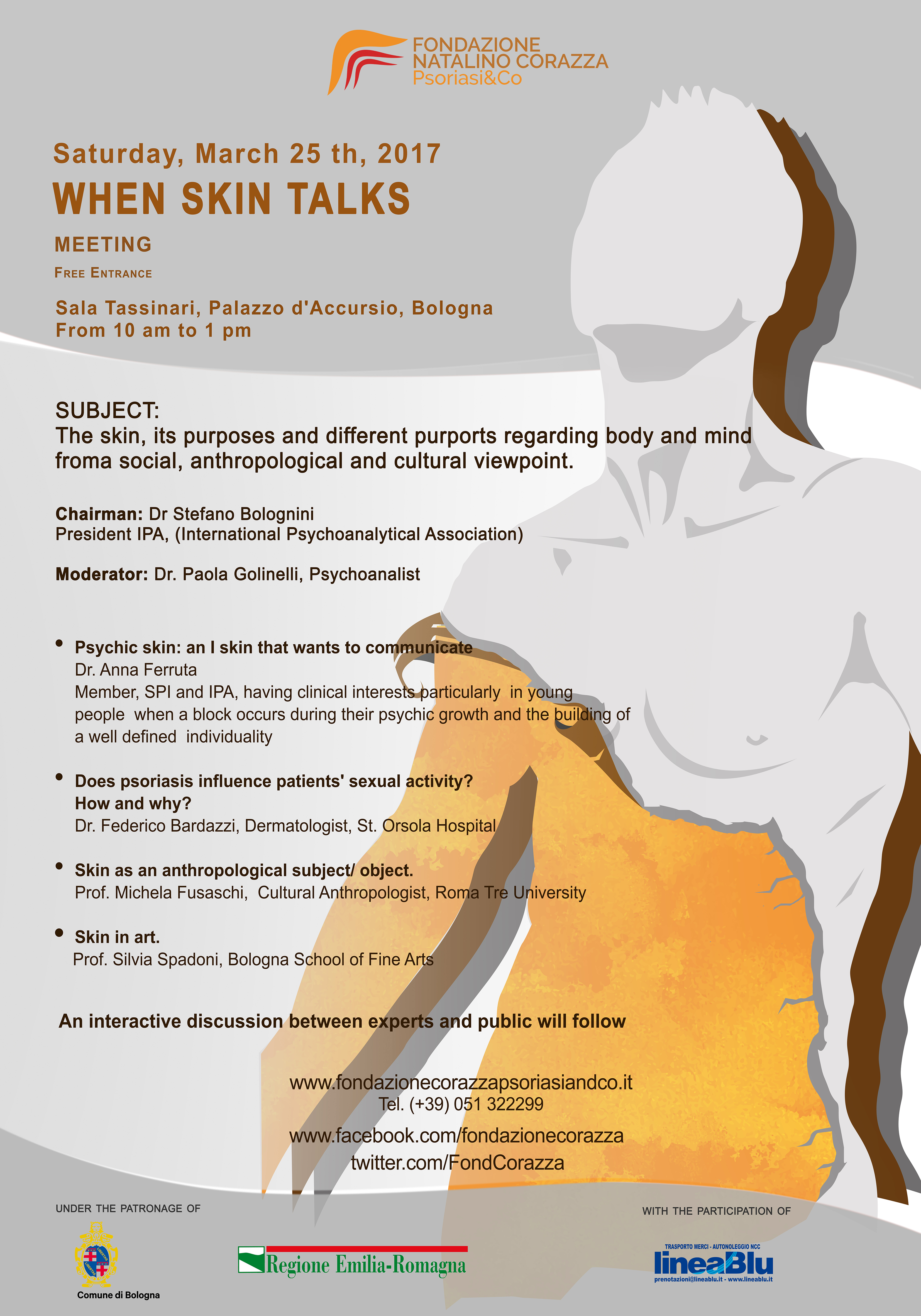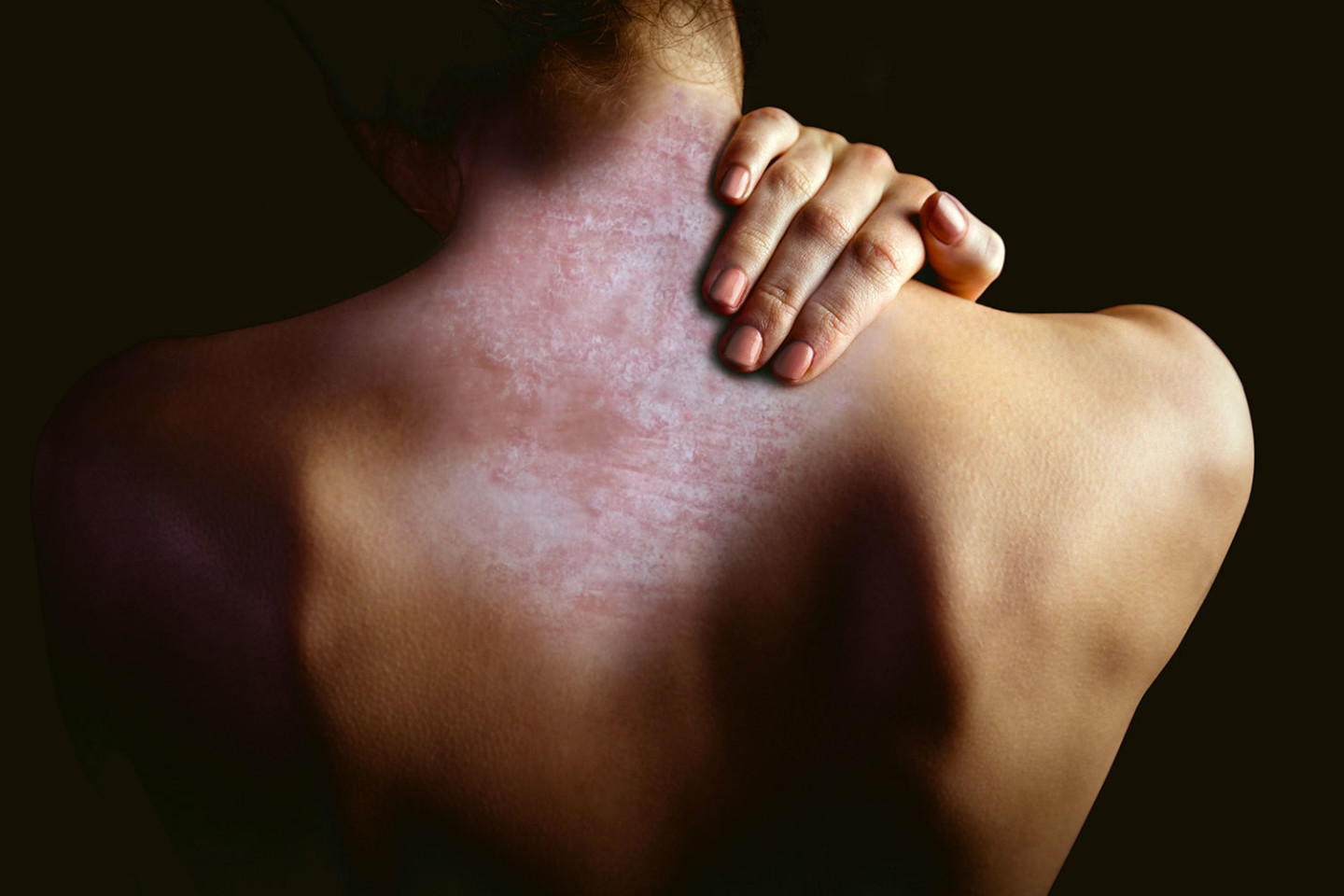How to treat psoriasis - New treatment approaches
“There is a whole group of people who do not seek treatment, or who resort to treatments that are ineffective, because they don’t trust the specialists. But to get the best treatment for their own particular symptoms, it is important that people consult a dermatologist at a specialist referral centre.” Dermatologist at the Policlinico of Modena University Hospital Trust, Andrea Conti’s words are a heartfelt appeal to those with psoriasis.
Scientific advances mean that doctors are able to respond even to the most complex needs of patients, bringing new hope and encouragement to those suffering from the disease. “It’s true that there were very few means of treating psoriasis until not so long ago, and those that were available were often complex to use. Now, however, there are a number of new treatments available, so it’s crucial that patients understand the disease, that they do not shut themselves away, and that they talk about the illness with a specialist, helping both us and them to combat the outdated stigma surrounding the disease. It’s also vital to remember that psoriasis can be associated with other diseases, such as metabolic, cardiovascular and articular disorders, making it a complex illness which requires treatment and should not be underestimated. Ideally, treatment should consist of a multidisciplinary approach, with a care team headed by a dermatologist, which aims to offer the right solutions for each individual patient.”
Technically, psoriasis is defined as a chronic immune-mediated inflammatory disease. And it is on the word “chronic” that we need to focus our attention. Although the disease can go into almost complete remission, even for months at a time, there is always the risk of the lesions reappearing. Today we know that there are a number of disease triggers that should not be underestimated, which lead to the disease in its various forms, and which differ in terms of severity and involvement of other body systems besides the skin. Genetic predisposition is certainly a major factor, but it is important not to underestimate the environmental factors and the activity of the body’s immune system, which contributes to the lesions.
The important is knowing the disease and trying not to hide it.
Psoriasis often leads to discomfort, embarrassment and frustration, which all impact negatively on the patient’s sense of self-esteem; the patient’s general health and quality of life are correlated to the severity of the illness and its symptoms, and it is crucial that patients understand the disease and do not hide themselves away. Plaques that appear in very visible areas of the body, such as the face, scalp and nails, can lead to deep feelings of shame and embarrassment, with a significant impact on day-to-day life and personal relationships. Patches in less visible areas of the body may lessen these feelings of shame, however the disease is just as problematic due to the pain and itching it causes.
“At the end of the day, it is important that the specialist defines the severity of the clinical picture, along with the most important strategies to treat the disease”, Conti concludes. “New treatment approaches are now available, using innovative drugs which can send the disease into stable remission for long periods. But most of all, we have safe and effective treatment solutions which are able to improve and even prevent the onset of other conditions – arthritis first and foremost – which can be associated with psoriasis.”
Article by Federico Mereta, published in “Il Resto del Carlino” on 27 May 2018
Psoriasis: 6 tips to improve your skin during Summer
Summer is the perfect time to treat psoriasis naturally. The sun in summer is like a drug for our skin as it supplies about 80% of the vitamin D we need daily.
1.The importance of vitamin D
Regarded as a hormone rather than a vitamin, it monitors the calcium absorbed by our intestine, checks calcium and phosphor levels in our blood and bones and is therefore essential for children’s growth, to prevent osteoporosis, a bone brittleness frequently found in menopausal women, and as an anti- inflammatory. Low levels of vitamin D may lead to irritable bowel syndrome and inflammatory colitis.
2.Sun exposure. When and for how long
About 20 minutes a day on the naked skin, wearing a bathing suit or a t-shirt and shorts will supply the daily need of vitamin D. Fair skinned people do not need a long exposure. Tanning will make us assimilate vitamin D more slowly. In winter a 30 minute walk with uncovered face and hands should be enough.
UV radiation is very strong between 11 am and 4 pm, making it easy to get sunburnt. Height and seawater, snow or tanning mirrors’ reflection may increase its intensity.
3.Use creams to protect your skin
It is advisable to use creams with a filter suited to one’s phototype.
Sunscreens, while protecting us against UV rays, do not allow vitamin D synthesis. It is therefore suggested to use them in the hottest hours of the day, exposing the naked skin for at least 20 minutes when the sun is low and there is no risk of a sunburn.
4.Avoid overexposure as it could have adverse consequences
These are the most frequent pathologies caused by overexposure:
- Melanoma: overexposure to UV rays, i. e. sun rays, is the main risk factor of skin melanoma. Other known risks are an impaired immune system and some hereditary diseases.
- Basal cells carcinoma (BCC) and spinal cells carcinoma (SCC), are the most common forms of skin cancer, with about 2.8 million new cases diagnosed each year in the US. People affected by BCC in the past have higher chance to develop similar pathologies both in the same site of the first tumor as in other parts of the body. The main cause of BCC is sun exposure. The damage made by this tumor is the result of both a chronic and cumulative exposure to sunlight like daily exposure and an occasional and intense exposure that leads, for example, to the appearance of sunburns.
- Premature skin aging caused by sunburns.
5. The sun is our ally but we must pay attention to our skin’s health
The sun is essential for our life: it speeds up cell renewal and acts as a disinfectant blocking the reproduction of some bacteria, stimulates the formation of vitamin D and is also a natural antidepressant, as it increases the production of serotonin, the hormone of happiness.
It is necessary to follow the rules and understand the feeling of distress caused by the sun.
6. Eating food rich in antioxidants and Vitamin C protects us from sun exposure
Food rich in antioxidants favours skin protection and strenghten our defense against free radicals (they are caused by external factors such as pollution, smoking and sun exposure). Antioxidants can be found in: apricots, melons, peaches, blackberries, blueberries, tomatoes and last but not least in nuts. While food rich in Vitamin C like kiwis, oranges, lemons and in Vitamin A (also known as Retinol) helps the synthesis of molecules of the connective layer: they are responsible of skin hydration and elasticity. Among food rich in Vitamin A we can find eggs, cheese, spinach and broccoli. You can seehere the new food pyramid made by doctors.
The human body contains an organ never seen before
New investigative methods revealed an interstitium under our skin and mucous membranes, made of canals full of fluids. Now we need to know its usefulness.
Is it possible that, 500 years after Leonardo’s accurate drawings of the human body, there are still organs to be discovered? According to Neil Theise, professor of pathology at New York University, we had in fact overlooked one of our body’s largest organs. “We called it ‘interstitium’ and it is formed by our connective tissue, i.e. the layer that makes skin adhere to our muscles or mucous membrane to internal organs” he says. “We thought that the connective tissue was formed by a compact collagen matrix and other fibrous proteins generated by specialized cells. However we discovered that it is actually intersected by a dense network of vessels full of liquid, the function of which we still ignore”.
It is easy to understand why nobody noticed it until now. In order to examine tissues under a microscope, researchers dehidrate them for preservation, thus causing the collapse of the connective tissue’s vessels, about twenty thousandths of a millimiter, making them unrecognizable. “We have only just noticed them thanks to the laser confocal endomicroscopy, which makes it possible to examine working living tissues.” Applying this technique to find out the size of a tumour in a patient’s bile ducts, surgeons David Carr Locke and Petros Benias at Beth Israel Medical Centre were the first ones to notice the canals in the connective tissue, which were later found under every tissue lining the human body. The interstitium can therefore be considered one of our largest organs”.
So large that it also solved the mystery of the location of approximately 40 litres of water in our body, as our cells contain about half that amount, blood and lymph only another 15%: the missing 35% swells the interstitium.
“This liquid pillow’s main function is probably to cushion the impact on internal organs, but it could also convey nutrients or it could play a role in immune reactions as these canals are carpeted with mesenchymal cells forming scars when inflamed. It could even convey electric current, thus explaining the efficacy of acupuncture” concludes Thiese, who is very interested in traditional medicine.
“This discovery can have a considerable medical spillover” confirms Giorgio Iervasi, head of the Institute of Clinical Physiology at Pisa’s CNR.
“This network of canals can explain, for example, why interstitial tumours are quite dangerous: maybe cancer cells move through them creating metastases. The interstitium could also play a part in skin diseases and aging. In order to understand it we must identify this new organ’s role and ascertain what flows in its canals. Only thus we shall be able to see how it changes in case of diseases and if it can be used as a diagnostic means and to administer therapies.”
This article was written by Alex Saragosa from “Il Venerdì” of the “La Repubblica” newspaper on the 20th of April 2018
When Skin Talks
The skin, its purposes and different purports regarding body and mind from social, anthropological and cultural viewpoint.
Emotion al Shell - Award Fondazione Natalino Corazza Psoriasi & Co.
FIRST EDITION
The Fondazione Natalino Corazza Psoriasi & Co. establishes an award open to all students of the Bologna Academy of Arts.
Theme of the Award
The Award, in line with the Foundation’s mission, has as it’s main object the skin.
Skin is investigated and examined as it holds the experience of life, youth and old age. Skin speaks, like a gossiper who cannot keep a secret. Skin talks to us, without words or sound, simply revealing itself to us. we can call it many words: our hide, our fur, our peel.
A skin both hard and fragile, sensitive and thick, that protects and afflicts us.
A sacred shell, an emotional shell.
“From a physiological point of view our skin is not just what covers our body but the finest and most sensitive sense of touch. Spiritually, it is the aura which protects man”.
( Ernst Junger: ” Language and Anatomy”).
We could also envision our skin as a book cover, both contai ing us while at the same time expo sing itself. ” My skin is an open book, its binding falls apart with no need to leaf through it. My skin is a book cover from the first page to the last”.
( Tiziano Scarpa: “Corpo”)
A surface which individualizes and diversifies us with its granular structure, its colour, its smell. Human skin presents considerable individual differences.
Such differences can be narcisistically over- invested ( even socially). These differences allow us to discern in others the object of their devotion and love and to assert themselves as individuals with their own, exclusive skin.
( Didier Anzieu: ” The I skin)
Surface is therefore a tactility, an imprint belonging to an outward, visible world that can interfere with an inward, more intimate and invisibile world, our soul, our psiche, our most personal, emotional ego, modifying and/ or shaping it.
How does our skin, inevitably exposed and visible to all influence, through interaction, our inner nature, our personal self, our soul?
The Foundation asks participants to consider how each work was elaborated, allowing young artists to express themselves freely on this subject.
The awards giving ceremony will take place on April 7 th, 2017 in the Aula Magna of the Bologna Academy of Fine Arts.
Prizes will be given by the anthropologist David Le Breton.
Prof. Alberto Giannetti
 Professor Emeritus, Dermatology, University of Modena and Reggio Emilia
Professor Emeritus, Dermatology, University of Modena and Reggio Emilia
Graduated from Pavia University.
Head of Dermatology, St. Anna Hospital, Como, then Head of Dermatology, University of Modena until 2010.
Visiting Professor at the Dermatology Department, Harward University, Boston and at Mayo Clinic, Rochester, USA.
Member, then President of the European Academy of Dermatology and Venereology. Vice President of the International Society of Dermatology.
Active honorary member of the main international dermatological societies.
Author of 622 scientific publications.
Prof. Cristina Magnoni
 Associate Professor, Responsible for Dermatologic Surgery Unit of University of Modena e Reggio Emilia
Associate Professor, Responsible for Dermatologic Surgery Unit of University of Modena e Reggio Emilia
Degree in Medicine and Surgery (summa cum laude) and specialization in Dermatology and Venereology at the University of Modena e Reggio Emilia.
Visiting research fellow at Boston University School of Medicine – Dermatologic Department.
Since 2006 associate professor of Dermatology, and since 2010 responsible for Dermatologic Surgery Unit at Modena general University Hospital.
Since 2012 Director of the Interuniversitary Master in “Wound Care” of the Faculty of Medicine and Surgery, University of Modena e Reggio Emilia in collaboration with the Faculty of Medicine and Surgery of Pisa and Ancona.
Dr. Andrea Conti
 Specialist in Dermatology and Venereal diseases, Modena General Hospital.
Specialist in Dermatology and Venereal diseases, Modena General Hospital.
Graduated from the Pavia University, Specialization in Dermatology and Venereal diseases at The University of Modena. Worked at St. Anna Hospital, Como and at Plastic Surgery ward of Modena General Hospital.
Since 2003 Head of Medicine Complex Structure of Dermatology, Modena General Hospital.
Considerable experience using systemic biological drugs, especially on psoriasis.
Member of SIDeMaST (Italian Society of Dermatology medical, surgical, aesthetical and sexually transmitted diseases.
Author of many scientific publications.
Prof. Luigi Bolondi
 Professor of internal Medicine, Alma Mater Studiorum, University of Bologna.
Professor of internal Medicine, Alma Mater Studiorum, University of Bologna.
Graduated summa cum laude and publication of the thesis by the University of Bologna, where he develops his academic career.
Director, Department of Diseases of the Digestive Apparatus and Internal Medicine ( from 2007 to 2014).
President of European Ultrasound Society (EFSUMB) from 1993 to 1996. President, Medical Surgical Society (from 2006 to 2011).
President, School of Medicine & Surgery, from 2012 to 2015.
Secretary, then President (from1993 to 1995) of the Italian Ultrasound Society.
Honorary member of the American Institute of Ultrasound in medicine.
Dr. Angelo Tranfaglia
 Prefect
Prefect
Cavaliere di Gran Croce ordine al Merito della Repubblica Italiana
Graduated Summa cum Laude from Federico II University, Naples, specialization in criminal law and procedure. Appointed prefectural councillor in 1976, performs managerial duties in difficult or emergency situations.
Commissioner of several public institutions and local administrations.
Appointed prefect of the Italian Republic in 1994 for the cities of Rovigo, Lucca, Vicenza and Parma, later of Bologna until 2013.
During these 18 years has shown tactical, strategic and problem solving skills, constantly attentive to training and updating needs.
Several teaching appointments and publications concerning many institutional and professional subjects.


